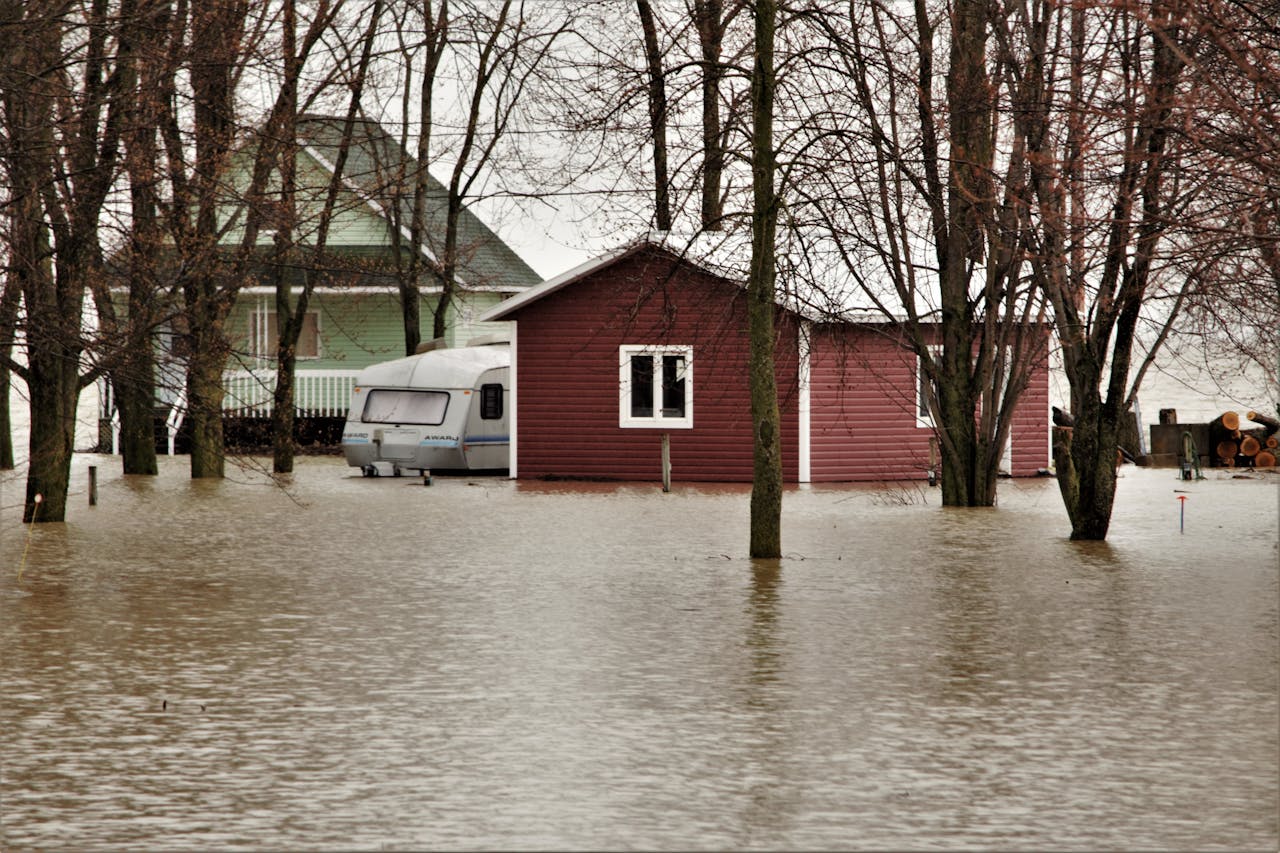The city of York, with its rich history and picturesque landscapes, often appeals as a desirable place to purchase a property. However, as prospective homeowners, it’s crucial that you’re informed about the potential risks associated with your new home. Among these risks, flooding is a significant concern. By understanding flood risks, knowing how to read FEMA flood maps, and considering flood insurance policies, you can make an informed decision about purchasing a property in York.
Understanding flood risks
When buying a home, it’s prudent to assess the flood risk associated with the property. This doesn’t just involve knowing if the property has experienced flooding in the past, but also recognizing the potential for future flooding.
A lire en complément : Can a green roof improve energy efficiency in your UK home?
The Federal Emergency Management Agency (FEMA) categorizes areas into different flood zones based on their level of risk. These zones are outlined on FEMA’s flood Insurance Rate Maps (FIRMs), which are an excellent resource for homeowners to understand the flood risk associated with their property.
Flood zones are divided into high risk, moderate-to-low risk, and undefined risk areas. High risk zones, labeled as zones beginning with A or V, have a 1 percent annual chance of flooding. Moderate-to-low risk zones, marked with B, C, or X, are areas with a reduced risk of flooding but still contribute to an overall risk profile. The undefined risk areas, marked with D, are regions where flood hazards are undetermined.
Cela peut vous intéresser : How to find age-friendly home features for senior living in Norfolk?
Using FEMA flood maps
FEMA flood maps are a reliable source of information for assessing flood risk. These maps provide a comprehensive view of the different flood risk zones in a given area. To use these maps effectively, you need to understand what the different designations mean and how they can impact your property.
The FEMA maps are updated regularly to reflect changes in land use, climate, and flood control measures. As such, even if a property hasn’t been prone to flooding in the past, it still might be at risk if it’s located in a high-risk flood zone.
To find your prospective property on the FEMA flood map, you would need to enter the property’s address on the FEMA Map Service Center’s website. This will provide you with a detailed map that shows the flood risk zones.
Considering flood insurance
Flood damage can be costly, and unfortunately, it’s not typically covered by standard homeowners’ insurance policies. This is where flood insurance comes in. Flood insurance can cover damage caused by floods, including structural damage, debris clean-up, and the replacement of personal belongings.
The National Flood Insurance Program (NFIP) is a program managed by FEMA, which provides homeowners with flood insurance policies. If your property is located in a high-risk flood area, purchasing a flood insurance policy through this program may be mandatory.
Flood insurance premiums vary depending on the flood zone in which your property is located. Properties in high-risk flood zones will typically have higher premiums. However, even if your property is in a moderate-to-low risk zone, purchasing flood insurance could still be a wise decision.
The importance of flood risk disclosure
In some areas, sellers are required to disclose the flood risk associated with a property. This disclosure includes information on previous flood events, flood insurance claims, and flood zone classification. However, not all states require this disclosure.
In York, it’s imperative for buyers to request flood risk information from sellers. This information can provide valuable insights into the flood risk associated with the property and can help in making an informed decision.
Bear in mind that even with a disclosure, it’s still important to perform your own due diligence. This could involve hiring a professional to conduct a flood risk assessment or speaking to neighbors about their experiences with flooding in the area.
Protecting your home from flood damage
Once you’ve purchased a property in a flood-prone area, there are measures you can take to protect your home from flood damage. These include installing flood barriers, sealing basement walls, and elevating utilities. Regular maintenance and inspection of these measures are also crucial to ensure their effectiveness.
Furthermore, creating a flood emergency plan is an essential step in protecting your property and ensuring the safety of your family. This plan should include evacuation routes, emergency contact numbers, and a list of important documents to take with you in the event of a flood.
By understanding flood risks, using FEMA flood maps, considering flood insurance, ensuring flood risk disclosure, and taking measures to protect your home, you can confidently purchase a property in York without the worry of unexpected flood events.
The Role of Local Authorities in Flood Risk Management
Local authorities in York and across the United Kingdom play a crucial role in managing flood risk. They are responsible for developing and implementing local flood risk management strategies in their respective jurisdictions. These strategies are typically based on the wider national flood risk management plan, which is designed to provide a comprehensive approach to managing flood risks across the country.
In York, the local authority is the City of York Council, which works in collaboration with the Environment Agency and other key stakeholders to manage flood risk in the city. The Council has a dedicated Flood Risk Management Team, which is responsible for developing and implementing the local flood risk management strategy.
The strategy documents provide information on the measures that are being taken to manage flood risk in the city. This includes physical measures such as the construction and maintenance of flood defenses, as well as non-physical measures such as planning controls and public awareness campaigns.
Furthermore, the Council also provides guidance and support to homeowners and businesses in York to help them understand and manage their flood risk. This includes providing advice on flood precautions, insurance, and property resilience measures.
In addition, the Council also operates a Flood Alert system, which provides timely updates on potential flood events in the city. Homeowners and businesses can sign up to this system to receive alerts via email or text message.
The Impact of Climate Change on Flood Risk
Climate change is expected to have a significant impact on flood risk in York and across the United Kingdom. According to the UK’s Climate Projections, the country is likely to experience more frequent and intense rainfall events in the future, which could increase the risk of flooding.
In York, the city’s historic buildings and infrastructure could be particularly vulnerable to the impacts of climate change. The city’s location, at the confluence of two rivers, also makes it particularly vulnerable to river and surface water flooding.
It’s therefore crucial for homeowners and businesses in York to take climate change into consideration when assessing the flood risk associated with their properties. This means not just looking at the current flood risk, but also trying to anticipate future changes in flood risk due to climate change.
In conclusion, assessing the flood risk before purchasing a home in York involves understanding the flood risks, using FEMA flood maps, considering flood insurance, ensuring flood risk disclosure, and taking measures to protect your home. It also involves understanding the role of local authorities in flood risk management and considering the potential impacts of climate change. With this comprehensive approach, prospective homeowners can make an informed decision and take steps to protect their properties from the potential impacts of flooding.






